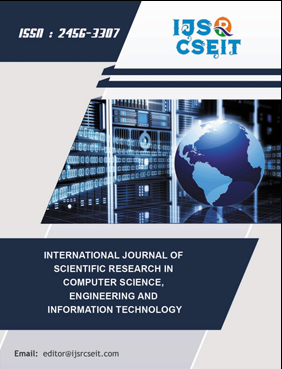Analysing social media with an Improved K-Means Clustering Algorithm
DOI:
https://doi.org/10.32628/CSEIT24104106Keywords:
Social Networking, Clustering, Java Programming, Hadoop, K-Means, Big DataAbstract
Nowadays, sharing human social behavior and growing a multi-user network requires the use of social media. Analysis of social media provides a valuable opportunity to study human social activity at scale. People often bring and talk about different kind of topics on social media platforms. depending on which, discussions are made to show the positive as well dis positives ways. This is an interesting point about using social media. There is a great deal of information about the type and substance of these discussion holography’s that informs us more broadly around patterns in social media interactions, and how content flows between individuals. Data mining techniques exists which can be utilized to crunch out user information from social media and relationships existing within the network. However, state of the art methods often fail to model user communities and their behaviors at a correct level. To solve this problem and help successfully do the grouping of related information, in our work here we present an enhanced fuzzy means clustering approach. Using this technique reduces the creation and time complexity of clusters, resulting in higher quality group outcomes. Our proposed system aims at mitigating the problems as described above by introducing a scalable and effective solution for real-time cluster social media data.
📊 Article Downloads
References
A. Ghosh and T. Veale (2016) "Fracking sarcasm using neural network" in Proceedings of 7th Workshop Computing Approaches Subjectivity, Sentiment Social Media Analysis, pp. 161–169. DOI: https://doi.org/10.18653/v1/W16-0425
A. Joshi, P. Bhattacharyya, and M. J. Carman (2017)"Automatic sarcasm detection: A survey." ACM Computing Surveys, Article Id:1000, CSUR, ACM Digital Library,pp.1-22. DOI: https://doi.org/10.1145/3124420
A. Joshi, P. Bhattacharyya, M. Carman, J. Saraswati, and R. Shukla (2016) "How do cultural differences impact the quality of sarcasm annotation?: A case study of indian annotators and american text," in Proceedings of 10th SIGHUM Workshop Language Technology Cultural Heritage, Social Science and Humanities., Association of Computational Linguistics, Berlin, Germany, pp. 95–99. DOI: https://doi.org/10.18653/v1/W16-2111
A. Joshi, V. Sharma, and P. Bhattacharyya (July 2015) "Harnessing context incongruity for sarcasm detection," in Proceedings of 53rd Annual Meeting Association of Computational Linguistics, International Joint Conference Natural Language Process. (ACL-IJCNLP), vol. 2, pp. 757–762. DOI: https://doi.org/10.3115/v1/P15-2124
A. Kumar and A. Jaiswal (October 2017) "Empirical study of X.com and Tumblr for sentiment analysis using soft computing techniques," in Proceedings ofWorld Congress on Engineering and Computer Science (WCECS 2017), San Fransisco, USA,pp. 1–5.
A. Rajadesingan, R. Zafarani, and H. Liu (February 2015) "Sarcasm detection on X.com: A behavioural modeling approach," in Proceedings of 18th ACM International Conference on Web Search and Data Mining (WSDM), Shanghai, China, pp. 79–106 DOI: https://doi.org/10.1145/2684822.2685316
A. Reyes, P. Rosso, and D. Buscaldi (2012) "From humor recognition to irony detection: The figurative language of social media," Data Knowledge and Engineering, vol. 74, pp. 1–12. DOI: https://doi.org/10.1016/j.datak.2012.02.005
A. Reyes, P. Rosso, and T. Veale (2013) "A multidimensional approach for detecting irony in X.com," Language Resources Evaluation., vol. 47, no. 1, pp. 239–268. DOI: https://doi.org/10.1007/s10579-012-9196-x
A. Utsumi (September 1996)“Implicit display theory of verbal irony: Towards a computational model of irony," in Proceedings of the 12th -20 workshop on language technology joint with International Workshop of Computational Humor, Amsterdam.
Abhijit Mishra, DipteshKanojia, and Pushpak Bhattacharyya (2016)“Predicting readers sarcasm understandability by modeling gaze behavior”, Proceedings of the Thirtieth AAAI Conference on Artificial Intelligence (AAAI-16), Arizona, USA, pp.1-7. DOI: https://doi.org/10.1609/aaai.v30i1.9884
Downloads
Published
Issue
Section
License
Copyright (c) 2024 International Journal of Scientific Research in Computer Science, Engineering and Information Technology

This work is licensed under a Creative Commons Attribution 4.0 International License.




